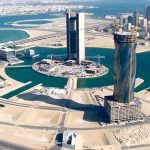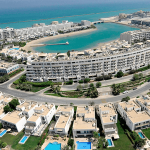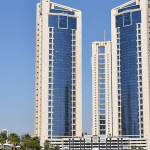Real estate has long been a stronghold of local economies in the Gulf region – from UAE, where the property market represents 44 percent of consumer price inflation (CPI), to Qatar where it represents 22 percent. Indeed, even in Saudi Arabia, where the market is less dependent on foreign investment, it still plays a vital role in the economy. Real estate megaprojects are an effective way to promote growth and economic diversification.
Gulf Cooperation Council (GCC) countries have planned almost one trillion U.S. dollars of investment in megaprojects, as they are looking forward to making a huge transformation economically and socially. Projects running into the tens of billions of dollars always involve risk and Gulf real estate megaprojects are no exception. These projects face extremely significant challenges, starting with their inherent complexity. They also have to overcome home-country barriers, from outmoded regulations to inefficient institutions.
The $1 trillion challenge

For years, real estate megaprojects have been part of GCC countries’ efforts to diversify their economies away from oil and gas. In the 1970s, Saudi Arabia used megaprojects to transform Yanbu and Jubail into industrial port cities.
There are close to 30 real estate megaprojects in the GCC as of early 2020, representing as much as US$1 trillion in investment. As these projects become operational over the next 10 years, they will help revitalize Gulf countries’ economies, creating significantly improved tourist attractions, entertainment venues, residential areas, and financial and health centers. The main goal of these megaprojects is to find new sources of growth, diversify economics, become more innovative and environmentally sustainable, and provide showcases for culture, heritage, and history.
The GCC’s real estate megaprojects take two fundamentally different forms. Some are greenfield projects set on large swaths of vacant land with the goal of creating completely new communities or providing new offerings. Examples include:
- Al Harir City in Kuwait
- Lusail City in Qatar
- Red Sea project and NEOM in Saudi Arabia
- Riyadh City project in Abu Dhabi in the United Arab Emirates (UAE)
Others are regeneration projects focused on reviving and restoring existing assets and communities, such as:
- Muharraq in Bahrain
- Downtowns of Jeddah and the capital, Riyadh in Saudi Arabia.
Although these projects are widely varied in their vision and scope, they are alike in their soaring ambition and daunting levels of complexity.
Read: Gulf Real Estate: Situation Analytics during COVID-19 Pandemic
Role of the project sponsors

The project sponsors make the cardinal errors of either delaying decisions about the institutional setup until a later stage, or they choose models that are incompatible with the overall purpose of the development. They prefer to focus initially on the master plan, on the development approach, and on the funding. Instead, the project sponsors should think of the institutional setup near the beginning of the megaproject, along with the fundamental concept behind the development. The institutional process is crucial and takes time to get right.
Role of the developer

Here pops up a key question: How many roles the master developer should play? This question can be answered by looking at five factors:
- Who owns the project
- How ambitious its vision or timeline is
- The quality of the existing ecosystem
- Any specific purpose associated with the project
- The identity of the project’s investors and partners
With the largest and most ambitious projects, it often makes sense for the master developer to play multiple roles. The master developer can also be the property developer, regulator and infrastructure service provider. The streamlined decision-making that results from consolidating roles in this way can minimize snags and keep projects moving.
There are GCC projects that exemplify this. In these projects, government or quasi-government entities have often moved beyond their master developer roles to add a regulatory role—which has in some cases made the private sector feel more comfortable about participating because it mitigated the risk.
However, there are also situations in which it makes sense for the master developer to restrict its activities to developing the concept, and let other entities run other parts of the project. This is often the approach in mature economies, where well-functioning ecosystems make it unnecessary for the master developer to play a major role outside of setting the vision.
A narrower role for the master developer is also often best if a project is going to make extensive use of private-sector funding. This is one situation in which it may not work for the master developer to double as the regulator as it can create the perception of a conflict of interest.
Institutional setups nevertheless have some flexibility to them as the initial setup does not have to be permanent. It is perfectly reasonable for the institutional structure to change as the mandate of a megaproject grows and the number of entities increases. Usually, the change is away from a single organization running all parts of the project to a set of organizations running it.
Institutional setup

Having the right institutional setup is a key enabler of any successful megaproject, with clearly defined relationships among all stakeholders (e.g., the project sponsor, property developers, market regulators, asset managers, and city services providers). These stakeholders must cooperate for real estate megaprojects to make a success. Yet in far too many cases, the initial discussions surrounding GCC megaprojects have been about the concept, the development plan, and the funding — leaving the institutional setup as an afterthought. Defining the institutional setup earlier makes a tremendous contribution to project success.
The best approach for a megaproject is to consider the institutional setup early and to align it with other aspects of the project. The institutional setup, and the delivery entity structure, are vital because they are intimately tied to the master plan, development approach, and funding. Getting the institutional setup right from the beginning will make all the difference to projects in which billions of dollars are at stake.
Conclusion

In real estate megaprojects, deciding on the institutional setup and structure of the delivery entity is critical. There are many trade-offs to make in defining the interaction of the different ecosystem players and in operating within the legal-regulatory framework of the jurisdiction where the megaproject is developing. Moreover, the design of the institutional setup and delivery entity structure are tightly connected to the project master plan, development approach, and funding approach.
For all of these reasons, it is best to think about the institutional setup early and coordinate it with other aspects of the project. It is a change in sequencing that can make all the difference to the success of the project.








.jpg)
.png)












.jpg)